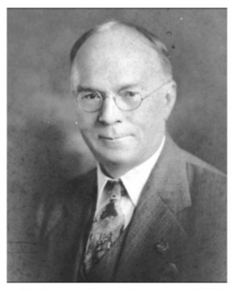- Details
- Written by Super User
- Hits: 5513

“WORD OF GOD”
The Holy Scripture is open at the center, signifying that the Harrellian community strives to live each day according to the teachingsof God. It is a constant reminderthat the whole community has a special mission to nurture one’s knowledge in constant reference to the Gospel of our Lord Jesus Christ. On it also lies the blue color, a dignified colorthat symbolizes the pursuit of academic excellence nurtured by the heavenly grace and dedicated service.
“LOVE and WISDOM”
The Harrellian community strives to inculcate oneach individual students to love God above all things. In doing so, all activities directed to love oneself, one’s neighbors, and finally to God, are given focus. It emphasizes also that any member of the community has no love to give if he/she is not mindful of his/her own unique ways in expressing and doing it.
“SERVICE”
It signifies that the schoolbrings joy to others because it finds goodness and valuable lessons in it. As a community, quality service is given which brings excellence ina person. With all the love and service a Harrellian gives to everyone in the community, the Philippines, and abroad, he/she transforms himself/herself to a person who possesses great wisdom in constant reference to the Divine Providence. To put it in direct manner, the Harrell Horne Integrated School is a service-oriented school of learning.
THE SYMBOLS INSIDE THE CIRCLE
Within the circular shape lie three mountains with the rising sun, and on the right side are God’spreciouscreation - the man and the woman. HHIS envisions producing graduates who will be shining armorsto help our country, Philippines,be alleviatedfrom poverty and the slavery of ignorance contrary to the ‘learned myth’ that only the “privilege” can have an access to quality education. AHarrellian gives shining grace to everyone as he encounters every person as a gift, neither as means nor simply a commodity, but as a Gift and a Blessing for Growth.
THE CURVE LINES
A series of curves is adopted for the rim to form a scallop which serves as an ornament of the school logo.
COLORS
The combination of the color blue and yellow symbolizesoptimism, enlightenment, and happiness. Shades of golden yellow carry the promise of a positive future. Golden Yellow will advance from surrounding colors and instill optimism and energy, as well as spark creative thoughts.
On the other hand, the color blue represents the dignified color of the school which embraces the idea of well-equipped citizens who value their existence to excelin life. As part of the official color of the school, it is seen as a symbol for beingtrustworthy, dependable and committed asthe school is devotedto pursue and put into life its vision and mission. A Harrellian profile perceives these symbols as constant variables in nurturing the values to become a responsible citizen in the country through proper quality education.
- Details
- Written by Super User
- Hits: 6233
 American philosopher and educator Herman Harrell Horne (1874-1946) was a leading spokesman for philosophical idealism in educational theory and practice during the first half of the 20th century. He advocated a spiritual and religious approach to education.
American philosopher and educator Herman Harrell Horne (1874-1946) was a leading spokesman for philosophical idealism in educational theory and practice during the first half of the 20th century. He advocated a spiritual and religious approach to education.
Herman Harrell Horne was born on November 22, 1874, in Clayton, North Carolina. His father was Hardee Horne, a farmer, and his mother was Ida Caroline Harrell Horne. Horne was educated in the public schools of Clayton and also at the Davis Military Academy in Winston-Salem, North Carolina. He attended the University of North Carolina in the early 1890s, receiving both the B.A. and the M.A. degrees in 1895. Shortly thereafter he went toHarvard University, where he received a second M.A. degree in 1897 and the Ph.D. degree in 1899. He did post-graduate work at the University of Berlin in 1906-1907.
Horne began his teaching career as an instructor in the Frenchlanguageat the University of North Carolina in 1894, a post he relinquished when he entered Harvard. Following the completion of hisdoctorate in 1899, Horne took a position as instructor in philosophy at Dartmouth College and quickly rose to the rank of full professor.
While at Dartmouth part of his teaching responsibility was in the area of philosophy of education, and some of his students later became prominent educational leaders, such as Harry Woodburn Chase, later chancellor of New York University; Edmund Ezra Day, later president of Cornell University; and Frank Porter Graham, later president of the University of North Carolina. Horne's interest in philosophy of education prompted him to leave academic philosophy at Dartmouth in 1909 for the position of professor of history and philosophy of education at New York University, a post he held until his retirement in 1942. In addition to his regular academic posts, he also lectured at numerous other leading colleges, universities, and seminaries.
Horne was an advocate of that philosophical school of thought known as idealism,a school that dominated American philosophy from the mid-19th century well into the 20th. Although idealism fell from favor in more recent times, it exercised a decided influence on American schools and the theory of education and it continuedto have moderate influence in religious education. Basically, idealism, as articulated by Horne in Idealism in Education(1910), holds to the centrality of the freedom of will, but it also recognizes that the individual is not an isolated entity; rather, the individual is a part of a larger whole.
Page 6 of 9











